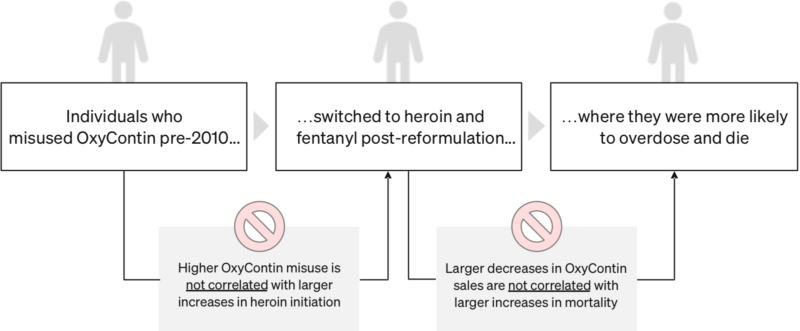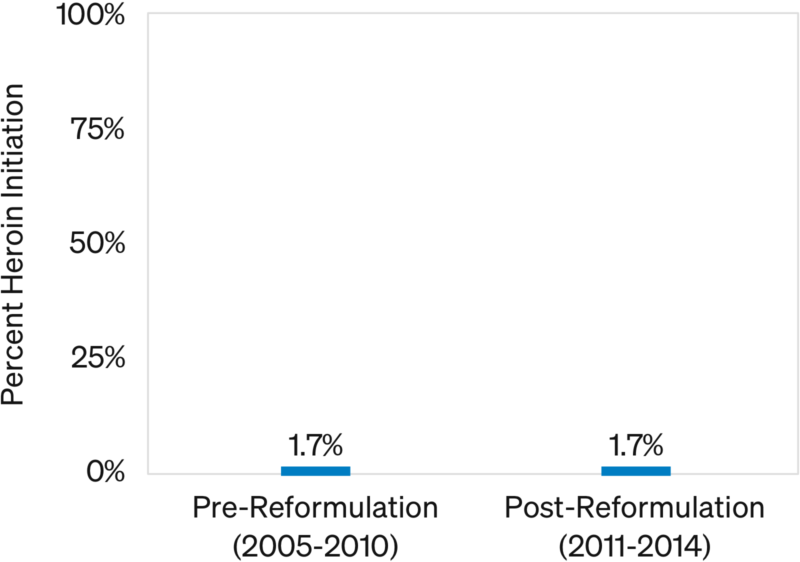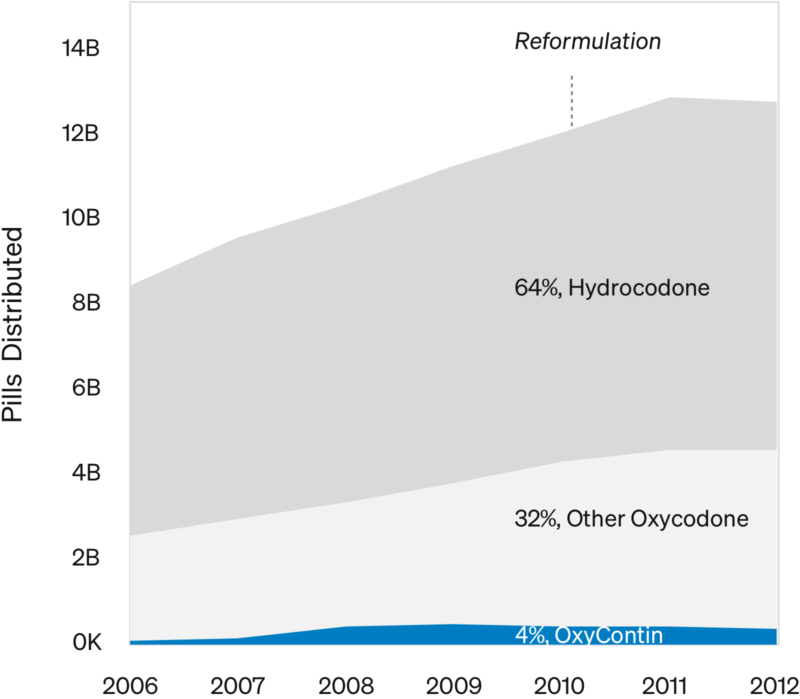Inaccurate Study: Heroin
Media often suggests that after Purdue Pharma introduced the FDA-approved tamper-resistant OxyContin in 2010, people began using heroin instead, leading to an increase in heroin deaths. The FDA, National Survey on Drug Use and Abuse and others have confirmed this is false.
False Narrative: Reformulated OxyContin Led to
New Heroin Users
“We find that states with the highest initial rates of OxyContin misuse experienced the largest increases in heroin deaths…”
Abby Alpert, David Powell, Rosalie Liccardo Pacula in “Supply-Side Drug Policy in the Presence of Substitutes: Evidence from the Introduction of Abuse-Deterrent Opioids”, November 2018[1]
“… after the reconstituted form of OxyContin went on the market in 2010, that balance changed. Prescription opioid death rates began to slow, but overdoses involving heroin more than quintupled.”
The Hill, February 2019[2]
“OxyContin became the best-selling opioid in the nation. It has been estimated that approximately 80% of heroin abusers started down the path of addiction and abuse through the use of prescription opioids.”
States & Territories Consolidated Proof of Claim Filing, filed as part of Purdue Pharma’s bankruptcy proceedings, August 2020[3]
“Reformulation continues to play a meaningful role in explaining the rise in heroin overdoses… we estimate a similar, though delayed pattern for synthetic opioids”
David Powell and Rosalie Liccardo Pacula in “The Evolving Consequences of OxyContin Reformulation on Drug Overdoses”, September 2021[4]
Examples of Additional News Outlets Reporting the False Claim
Fact: Reformulated OxyContin Did Not Lead to Increase in Heroin Use

In 2020, Carolyn Wolff et al found OxyContin’s abuse-deterrent formulation did not lead to an increase in heroin use.
“While previous studies have suggested that the reformulation led to increases in heroin deaths, our results suggest that any increase that occurred was likely not due to individuals switching from OxyContin to heroin.”
Carolyn Wolff, et al, published in international journal Addictive Behaviors, June 2020[5]
OxyContin Misusers Who Initiated Heroin Use During the Year

Just a few months later, the FDA review team further confirmed OxyContin ADF did not lead to new heroin users.
“There was not clear evidence that OxyContin’s reformulation caused heroin-naïve individuals to initiate use, and the shifts from OxyContin to heroin and other opioids may have often occurred in the setting of pre-existing polysubstance abuse including these drugs.”
FDA Briefing Document, OxyContin Abuse-Deterrent Formulation (ADF), September 2020[6]
Additional Supporting Facts
1. Generic hydrocodone and oxycodone – NOT OxyContin – have always been leaders in the prescription opioid market (including after Purdue introduced OxyContin ADF)
Any increase in heroin use could not logically just have been due to reformulated OxyContin, which has never accounted for more than 4% of the prescription opioid market
2. Generic opioid medicines played a major role within illicit markets
If someone were to crush a generic oxycodone pill, it would have produced the same effect as if they were to crush OxyContin (prior to the abuse-deterrent formulation being released) – at significantly lower street prices. The myth of OxyContin “dominance” ignores the realities of illicit market dynamics.
“… the most common and always available opioid was immediate release oxycodone”
James A. Inciardi, August 2009[7]

